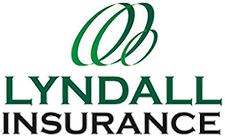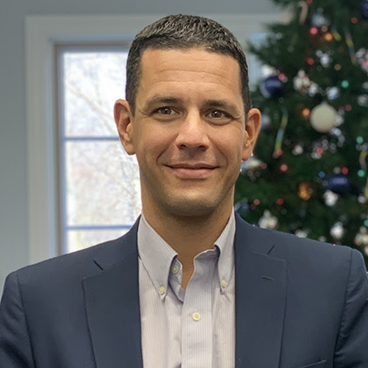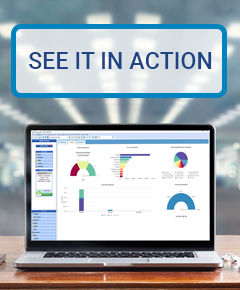
Agency Information
- Based in Chagrin Falls, OH
- Founded in 1971
- 65% personal lines, 35% commercial lines
- 30 Employees

Craig Lyndall
“We wanted someone who had the solid basics with an aspiration for steady growth. When we sat down with (SIS President) Michael (Doran) and the team, it was the right fit. It felt like sitting across the table from the agency management version of our own agency.”
Craig Lyndall and his brother Mark inherited a thriving independent agency in Lyndall Insurance thanks to decades of work from their father, Dale. Their focus on customer service, personal connection, and an “if it ain’t broke, don’t fix it” attitude served them well for decades, too. But, when their legacy agency management system was retired, they knew it was time to look for something new.
In their quest for a reliable system with room to grow, they met the Partner Platform team. In SIS and Partner Platform, Craig and his team saw their small business culture reflected, and a partnership was born.
Tell us a little bit about Lyndall Insurance – what makes you stand out in your industry?
Lyndall Insurance is a family business founded 50 years ago by my dad, Dale Lyndall. In the early 2000s, my brother Mark and I joined the business.
When Mark and I came on, we had about ten employees. Over the last almost 15 years, through acquisition and organic growth, we are now about 30 employees strong serving northeast Ohio.
Something unique about us is that we’re part of Secured Advantage, a partnership of independent agencies. They’re a specialized group, and it’s been a nice fit for us to get to know agency owners and swap stories, anecdotes, and best practices.
What first brought you to Partner Platform, and what stood out about the SIS team and Partner Platform system?
We first moved to Partner Platform because we were on an old, no longer supported system, and it was just time to change. Now, we’re not ones to be on the cutting edge of technology and follow a philosophy of letting others work out the kinks before adopting something new. We want to know it works and it’s necessary. We’ve found that when you’re chasing the “latest and greatest” tech, you can end up paying for it twice if it’s not ready for market. But we probably hung on to our old system too long, and it was time to upgrade.
Our previous system worked, but it was very basic. It helps us organize clients and prospects, keeping notes, and allowed us to download policies. That was all we needed at the time, but now our needs had changed.
When we went out looking, we weren’t impressed with providers who offered the sun, the moon, and the stars – we didn’t want that, and we knew they were overselling. We wanted someone who had the solid basics with an aspiration for steady growth. When we sat down with (SIS President) Michael (Doran) and the team, it was the right fit. It felt like sitting across the table from the agency management version of our own agency. They had small business values, with a tempered ambition to grow. We liked that.
In the end, it was the people and how they walked with us through everything. It was impressive to sit across the table from high-level people in the company right along with the people who would be training us and supporting us. And those people stayed with us the whole time. Nobody disappeared after a certain stage. We liked the stability that Partner Platform pitched and delivered on. It was familiar to us because that’s what we offer our customers – consistency, stability, and personalized support.
What was the transition experience like for your team?
The move to Partner Platform was a big step for our agency. Our old provider was our first and only management system, so we had never gone through a switch. We’d never gone through a data conversion. We’d never gone through a second training cycle on an agency management system. Culturally, it was a huge undertaking, and we took full advantage of the support the Partner Platform team offered. We had trainers come up to our offices, stay in hotels for two or three days and be on-site to do all the training, hand-holding, answering questions, and putting out the inevitable fires that go along with a transition or a go-live after a conversion. The option to have such in-person, hands-on service during the conversion was a differentiator. That wasn’t something other companies offered.
What has your experience been working with other management systems? How does it compare to Partner Platform and SIS?
After some time with Partner Platform, we started to see a shift in the market in terms of how much customers wanted re-markets. We were using a comparative rater outside of Partner Platform to do our rating, and the rater company had moved into the agency management system space. We’d been thinking a lot about how our tech stack kept growing, and the thought of consolidating was appealing, so we decided to give them a try.
But, as it turns out, they were a multi-rater company that tried to go back and build an agency management system – unfortunately it showed. It felt like we were working with a company that didn’t understand the day-to-day processes of an insurance agency, which caused a lot of trouble with our conversion. We finally hit a point where we didn’t see an acceptable path to fixing our implementation issues, so we decided to come back to Partner Platform.
(SIS Director of Implementation) Luke (Purnell) and the Partner Platform team came in and got us up and running again quickly. We’re still cleaning up little things here and there – and it’s certainly easier to go back to a system you left than to do a brand-new conversion – but what was there at Partner Platform when we came back was the same. It was the people. The same people who helped us go live when we first adopted the system were still there, and we knew them by name. That small business, people-oriented agency management system company was still there even after all those years.
What advice do you have for other agencies looking to upgrade their management system?
Focus on the basics of how you run your business and figure out what’s most important. One of the things that we sell is stability. We knew we wanted a provider and system that was steady, knew what they did well, and was comfortable with that. Without that stability, you get a system that frazzles employees, and that behind-the-scenes chaos leaks into your customer service. We learned that our culture and style need to be reflected as much as possible up and down through all of our partners.
As you look to the future, what challenges and opportunities are you preparing for in the next 5-10 years?
In the industry and the agency management system space, we’ve seen tons of consolidation – a lot of mergers and acquisitions. M&A has been a big part of our agency over the last few years, and I don’t see it slowing down. As Baby Boomers near retirement age, those that don’t have perpetuation in place will turn to consolidation.
Also, I think the outside world – the outside investment world – is starting to take notice. Insurance is slow and steady, making it a good bet that many are taking. I think we’re going to continue to see large amounts of outside investment come into our space. The insurance industry is predictable with its ups and downs, and the things that make insurance “boring” to some make it attractive to investors. That outside investment could revolutionize the industry over the next ten years.
Then there are the tech companies that are getting into insurance. Suddenly everybody wants a piece of our action. At some point, through some level of innovation, there might be a significant chunk taken out of our business from tech. It’s always a threat. But the thing that keeps me from panicking is the authentic, personal connections we make with people every day. They’re not giving anything up by working with us – in fact, they get a little bit extra. We need to continue to focus on what it is we do to create value. It’s not faster quotes, and it’s not the $10 cheaper price; it’s the personal service.
We operate in a somewhat emotional business, and at times it’s hard to put in a business plan, but that’s part of our value proposition. We need to keep that in mind. Especially with the outside investment coming in, you end up putting everything on a spreadsheet and a lot of what we sell – a lot of what keeps us stable – is something that’s not easily encapsulated on an Excel spreadsheet.
How do you see SIS and Partner Platform supporting you in those future challenges?
Continuing to be a stable partner. Being responsive to our business style as we make acquisitions and helping us consolidate those new acquisitions into our new agency management system successfully so we can integrate our culture. I think that’s the most significant way. And to continue with the relevant improvements. We now integrated all of our esignature into Partner Platform. Continuing to improve without breaking things along the way, I think, is something critical for us.

